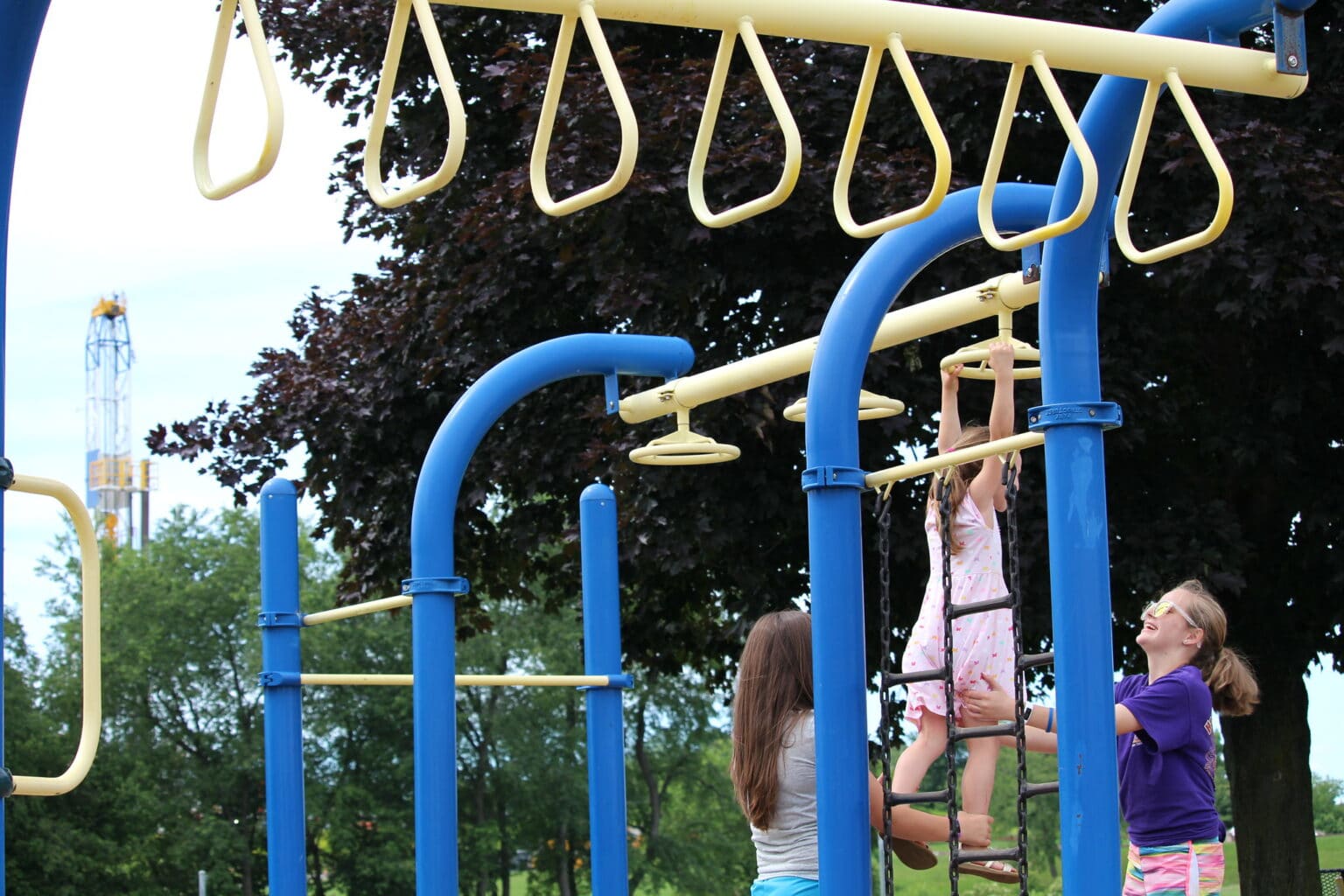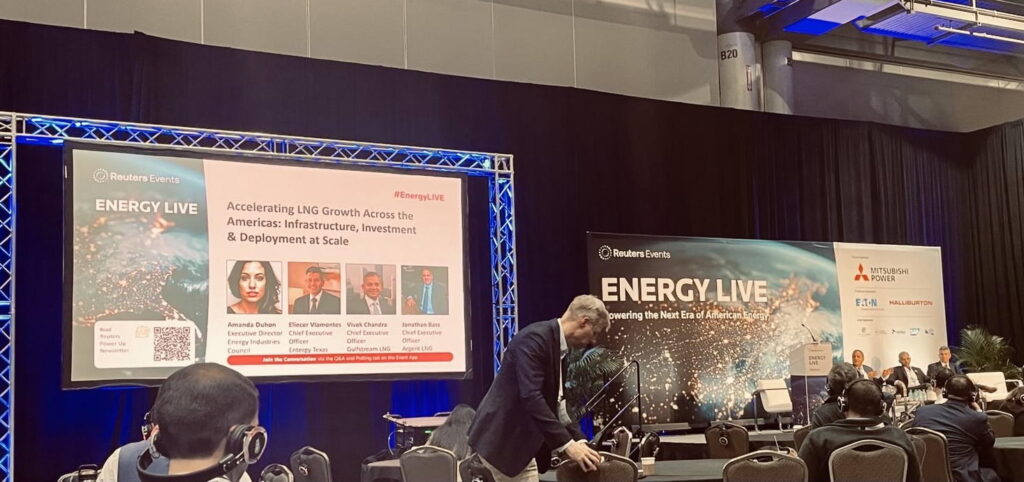Living near oil and gas drilling may increase pregnant women’s risk of developing gestational hypertension and eclampsia, according to a new study.
“We observed for those pregnant women within one kilometer of drilling that there’s about a 5 percent increase in odds of gestational hypertension, and 26 percent increase odds of eclampsia,” Mary Willis, a postdoctoral scholar at Oregon State University and one of the authors of the study, told DeSmog. “So, it’s this really close range where we are seeing a potential impact right on women’s health.”
The study, published in International Journal of Epidemiology in December 2021, looked at nearly 3 million births in the state of Texas over the course of 13 years between 1996 and 2009. The researchers analyzed pregnant women who live within roughly 6 miles of oil and gas drilling sites, and controlled for a variety of potential confounding factors, such as socioeconomic status, demographics, clinical risk factors, and differences in neighborhood contexts where the pregnant women live, such as median household income and proximity to the closest highway.
The health effects were worst for women living within 0.6 miles (one kilometer) of a drill site, with the links to negative health outcomes dissipating beyond 1.8 miles.
Gestational hypertension is a form of high blood pressure during pregnancy. Eclampsia is a rare but more serious condition that can result in seizures for the mother, and the interruption of blood flow to the fetus, which can lead to lower birthweights and preterm birth, and be fatal for the fetus. Women who suffer from eclampsia during pregnancy are at increased risk later in life of chronic high blood pressure, heart disease, and stroke.
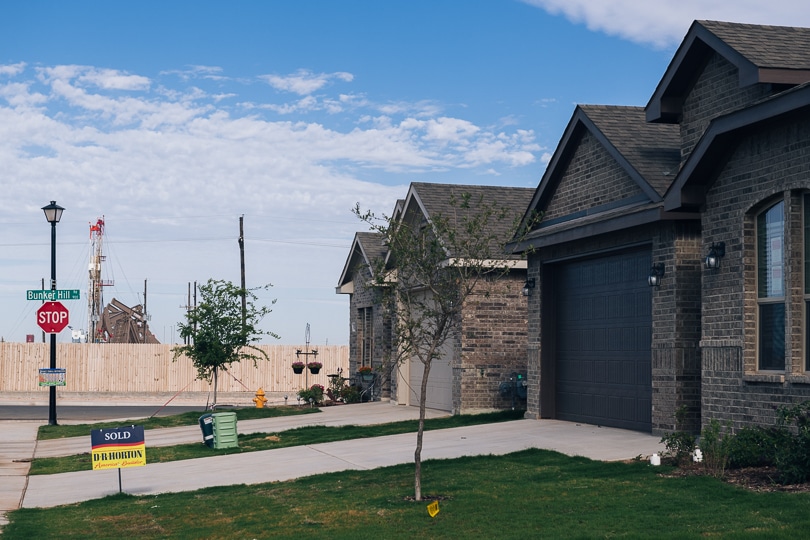
Fracking Aside, It’s Proximity That Matters
A growing body of evidence has demonstrated that proximity to drilling has negative health impacts, including for infants, but this was the first study to specifically analyze the impact of oil and gas drilling on hypertension for pregnant women.
The study did not pinpoint specific pollutants or look at what stage of the drilling process might be worse than others.
“There’s a lot of potential mechanisms. You’ve got air pollution from the drilling site itself. Flaring. The truck traffic going in and out of the site,” Willis told DeSmog. There is potential for water contamination, too, although that is more difficult to study, she said. Other hazards include light and noise pollution that can increase stress, which can contribute to gestational hypertension and eclampsia.
But because air pollution is known to increase hypertensive disorders, this finding is somewhat unsurprising. “Oil and gas drilling produces air pollution, so it made sense that we would find a similar increased risk near oil and gas sites,” Willis said.
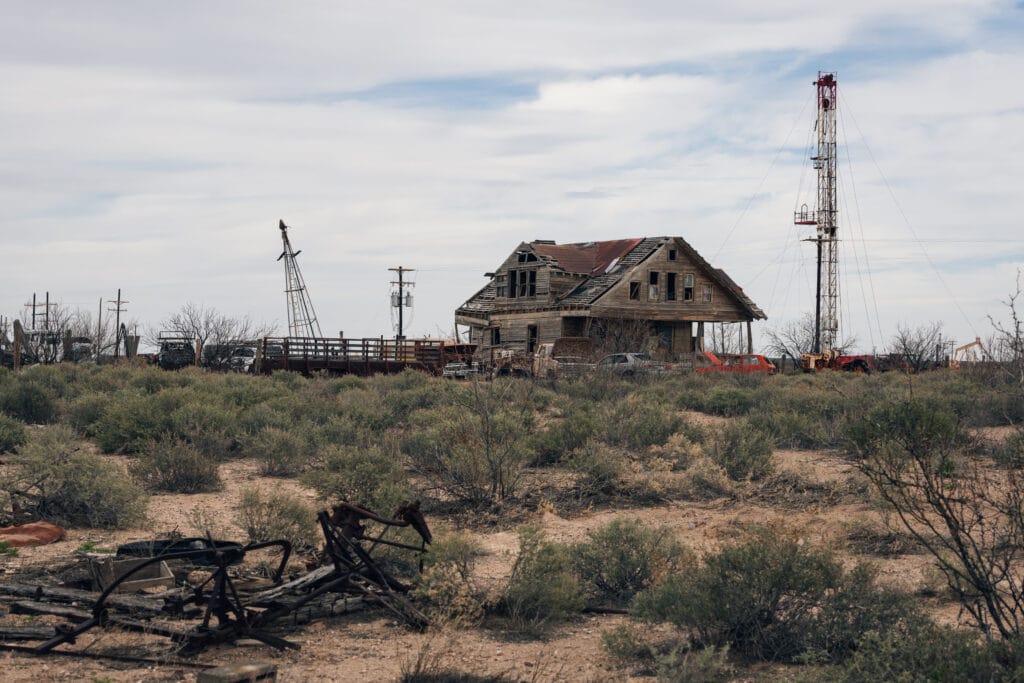
“This is just one more way the health of residents, especially those who are vulnerable, can be compromised by oil and gas production,” Alison L. Steele, executive director of the Environmental Health Project, a nonprofit public health organization based in southwestern Pennsylvania, said, commenting on the new study, of which she was not a part.
Last July, Willis and a team of researchers published a study that found that living near drill sites is correlated with lower birth weights for infants. That study looked at the same sample of people — roughly 2.8 million mother-infant pairs living in Texas between 1996 and 2009.
The results of these two studies back up other research into the health impacts of fracking operations, an increasingly common form of drilling after 2009. For example, a 2020 study from the University of California, Los Angeles found that living near flaring events, which burn off excess methane, or natural gas, is connected to an increased risk of preterm births.
But the latest study from Oregon State University captured a period of time that predated a lot of fracking. “We find it doesn’t matter — where people are extracting oil and gas resources, we’re still seeing an impact on infant health,” Willis said last year. “A lot of policy is exclusively focusing on fracking, but our study shows that’s a really limited view of how this industry may impact local populations.”
The common theme in all of these studies on health impacts is proximity — the closer someone is to drilling, the more hazardous it appears to be for one’s health, particularly for pregnant people and their babies. Infants born closest to drilling sites are more likely to be born earlier and weigh less, which can contribute to a variety of developmental and health problems, while their mothers can suffer from complications during pregnancy that can lead to lasting harm later in life. Communities of color also tend to bear the brunt of health impacts from nearby oil and gas drilling in places such as California.
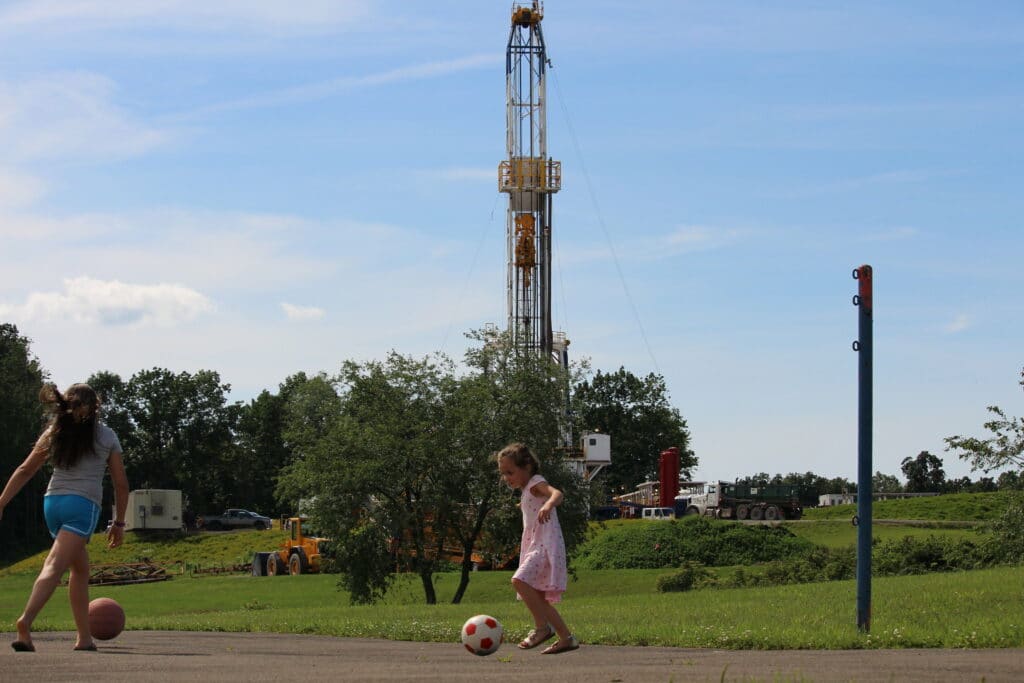
Putting Space Between People and Drilling Sites
There are no federal standards that require drillers to place operations at a safe setback distance from homes or businesses. Instead, a patchwork of state, county, and municipal authorities establish regulations.
Last year, California Governor Gavin Newsom announced new proposed rules that would require 3,200-foot setbacks on new oil and gas drilling, which would be the strongest in the nation and aligns with the distance where Willis’s studies find the most serious risks for pregnancies. Those rules are currently working their way through the state regulatory process and are not yet finalized.
But those rules would not affect existing wells. More than 2 million people in California live within 2,500 feet of an existing well, and another 5 million live within one mile, according to FracTracker Alliance, a watchdog group. “A denial of new permits within 3,200 feet is a great start, but it’s past time that we end all drilling in our communities,” Brandon Dawson, director of Sierra Club California, said at the time.
The oil industry has consistently fought hard to block setback distance requirements. The Western States Petroleum Association, whose members include Chevron, BP, ConocoPhillips, Exxon, and Shell, decried the proposed California rules for purportedly increasing costs on drillers. In 2018, the oil industry spent upwards of $40 million to defeat a Colorado ballot measure that would have imposed 2,500-foot setback requirements for drillers. Two years later, Colorado regulators went ahead and approved a 2,000-foot setback requirement for new wells.
Texas, the focus of Willis’s work, does not impose statewide setback distances, leaving it up to localities. In many instances, setback requirements at the local level are just a few hundred feet, or as Willis points out, even less.
“In Texas, drilling sites can be as close as 45 meters from residences,” Willis said. “Most people think that no one lives near drilling, but there are large populations that live in close proximity to this industry. As the industry expands, this means that an increasing segment of the population may be vulnerable to drilling-related pollution.”
Subscribe to our newsletter
Stay up to date with DeSmog news and alerts


